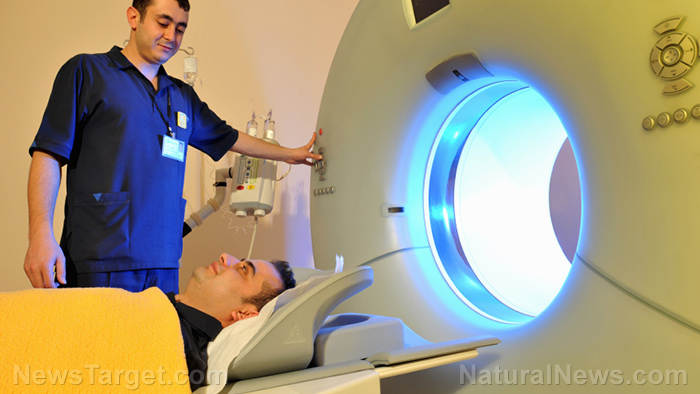New treatment for Parkinson’s is nonsurgical AND reduces need for meds; focused ultrasound will treat symptoms noninvasively
03/16/2018 / By David Williams

The treatment of Parkinson’s disease can be highly problematic. More often than not, those who are suffering from Parkinson’s need to be subjected to surgical forms of treatment and take a number of different meds that can help keep things under control. But it looks like things might change soon if a newly-devised method that is both non-invasive and also reduces the need for meds ever gets approved for mainstream use.
Researchers from the University of Maryland Medicine – which includes the University of Maryland Medical Center (UMMC) and the University of Maryland School of Medicine (UMSOM) – have recently made progress with a phase 3 study that tested the safety as well as the efficacy of using MRI-guided focused ultrasound on patient brains in order to treat Parkinson’s disease. The study was deemed pivotal as the last remaining step before the U.S. Food and Drug Administration (FDA) considers approving it for widespread use.
What exactly is this method that the study focused on? It’s a method of treating Parkinson’s that uses focused ultrasound wave energy directly on certain parts of the brain. By using MRI to help with guiding the focus, ultrawave energy can be used to essentially ablate cells in certain parts of the body (i.e. in the brain). The method can be used to determine the exact location of certain targets inside the human body, as well as to create a heat map so that it can be easier to know exactly where to aim.
It is said that doctors use MRI to guide ultrasound waves through a person’s skin and skull so that can more precisely target a region called the globus pallidus, a structure that’s located deep inside the brain that is responsible for voluntary movement. It relies more on careful execution rather than radiation or some other forms of invasive surgery.
According to Howard M. Eisenberg, a professor and chair of neurosurgery at UMSOM and the lead of the study, the method aims to offer a number of conveniences. “The goal of the focused ultrasound treatment is to both lessen the main symptoms of Parkinson’s disease, which include tremors, rigidity and slow movement,” he said, “as well as treat the dyskinesia that is a medication side effect, said that less medication is needed.”
The procedure can be done in an outpatient setting, and the patient can remain awake all through it, according to the researchers. The patient needs to be lying in an MRI scanner with a head-immobilizing frame that’s fitted with a transducer helmet. This converts energy from one form to another.
Ultrasonic energy is then channeled through the patient’s skull to the globus pallidus. Any images picked up during the performance of the procedure give doctors a real-time heat map of the area that is being examined and treated.
The doctors mainly increase the temperature in very restricted areas of the brain to ablate tissue. This has proved highly successful in at least one previous trials.
It is said that as many as a million Americans have Parkinson’s disease, a chronic, degenerative condition wherein patients need to come to terms with the fact that there is no cure. It is currently the second most common movement disorder and results in a serious loss of brain cells that are necessary for proper movement and coordination of the body. Some of the symptoms of Parkinson’s include tremors, rigidity, and impaired balance. Other non-motor symptoms such as anxiety, depression, and other non-cognitive conditions are also known to appear in patients.
Although the pilot trial of the procedure proved to be successful, the researchers are still trying to determine its multi-site efficacy. They are also looking into getting approval for much more comprehensive testing. Once approved, it could lead to a new non-invasive treatment option for a large number of people who are looking for a solution to their Parkinson’s disease-related problems.
Learn more about similar kinds of brain-related conditions in Brain.news.
Sources include:
Tagged Under: Brain cells, brain condition, Brain disease, brain health, future tech, inventions, medical technology, MRI, Parkinson's Disease, Parkinsons, ultrasound
RECENT NEWS & ARTICLES
COPYRIGHT © 2017 BRAIN NEWS


















